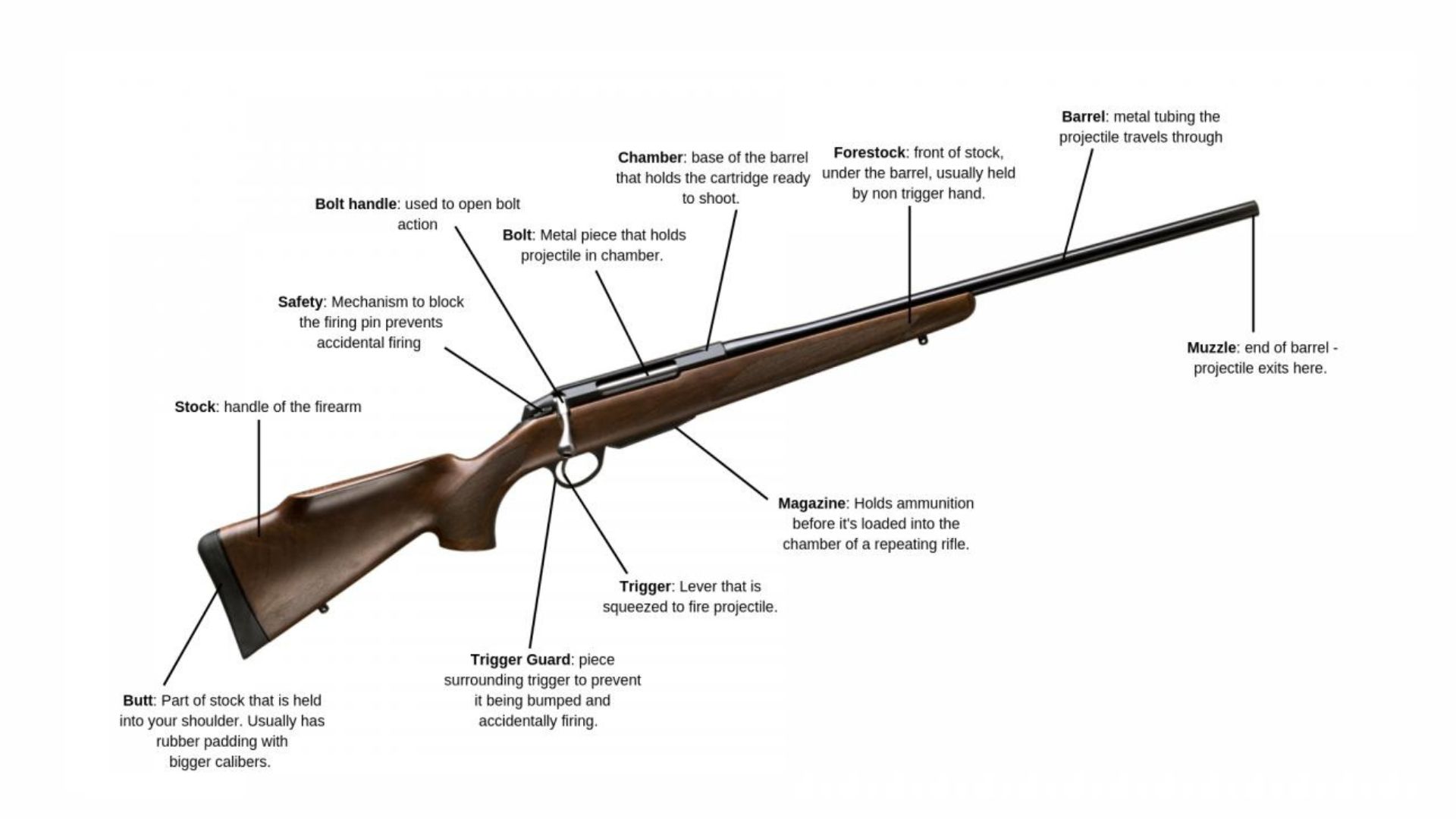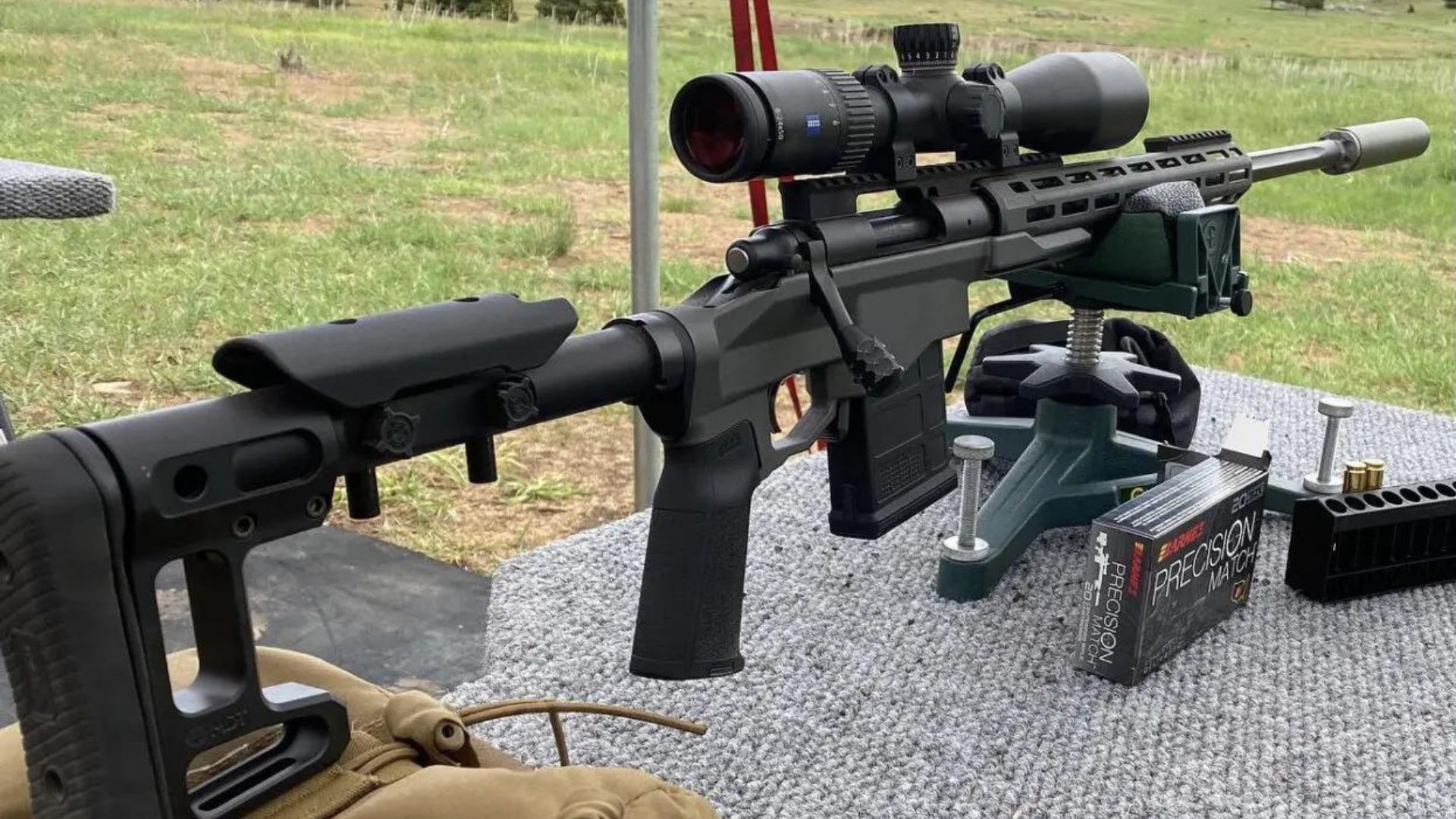Bolt-action rifles have played a pivotal role in military and civilian settings for nearly 200 years. Renowned for their reliability, precision, and straightforward design, they have become favorites among hunters, marksmen, and military snipers.
From their early use on the battlefields of the 19th century to their continued presence in hunting and target shooting today, bolt-action rifles have proven to be versatile and enduring firearms.
This article explores the mechanics of these rifles, their rich history, and why they remain relevant in a world dominated by semi-automatic weapons.
How It Works
A bolt-action rifle operates with a manual action. The shooter uses a bolt handle, usually located on the right side of the firearm, to load and eject cartridges.

To fire, the shooter lifts the bolt handle to unlock it, then pulls the bolt back to eject the spent cartridge and cock the firing mechanism. Pushing the bolt forward chambers a new round, and lowering the handle locks the bolt in place for the next shot.
Specifications
- Operation: Manual, rotating bolt or straight-pull bolt
- Caliber: Varies widely, from small calibers like .22 LR to large calibers like .50 BMG
- Magazine Capacity: Typically 3 to 10 rounds, depending on the design
- Barrel Length: Generally ranges from 18 to 26 inches, with longer barrels offering better accuracy at range
- Weight: Varies, usually between 6 and 10 pounds without optics or accessories
- Effective Range: Depends on caliber and barrel length, typically 500 to 1,200 yards for military sniper rifles
Most bolt-action rifles use a rotating bolt mechanism. This design requires the user to rotate the bolt to unlock it and pull it back to eject the spent cartridge.
Some models, like the Blaser R8, employ a straight-pull bolt, simplifying the action to a back-and-forth motion and reducing the number of steps required to chamber the next round. Straight-pull bolts allow for a faster rate of fire but are less common than the traditional rotating bolt.
Historical Background
Johann Nikolaus von Dreyse produced the first bolt-action rifle in 1824. His design, known as the Needle Gun, was adopted by the Prussian Army in 1841 and saw action in several European conflicts.

The Needle Gun used a paper cartridge with a needle-like firing pin to ignite the primer, a revolutionary design for its time. The bolt-action rifle design evolved, leading to more robust and efficient models.
Key Historical Models
- Mauser 98: Developed by Paul Mauser in 1898, this German rifle became the standard for bolt-action design. It features a controlled-feed mechanism, dual locking lugs, and a third safety lug. The Mauser 98 influenced many later designs and remains in use today, both in military surplus and hunting applications.
- Lee-Enfield: Adopted by the British Army in 1895, the Lee-Enfield featured a rear-locking bolt and a 10-round magazine, which was double the capacity of its contemporaries. It was renowned for its smooth action and rapid rate of fire, earning the nickname “The Mad Minute” for the speed with which a trained rifleman could fire.
- Mosin-Nagant: Introduced in 1891 by Imperial Russia, the Mosin-Nagant became one of the most produced military rifles in history, with over 37 million units made. It used a rotating bolt with a single locking lug and a five-round internal magazine.
Military to Civilian Transition
After World War II, semi-automatic and automatic rifles largely replaced bolt-action rifles in military service. However, bolt-action rifles didn’t disappear.
Their inherent accuracy and reliability ensured their continued use in specialized roles, particularly as sniper rifles. Military snipers often prefer bolt-action rifles because they can control the loading process more precisely, which is crucial for long-range accuracy.

Popular Calibers for Bolt-Action Rifles
Rimfire Calibers
Rimfire calibers like the .22 Long Rifle, .17 HMR, and .22 Magnum are staples for target practice and small game hunting.

These rounds are light, with almost no recoil, making them perfect for beginners or anyone looking to sharpen their skills without shoulder pain. While they won’t reach out and touch anything too far away, they excel at what they’re designed for—short-range precision and economy.
Straight-Walled/Pistol Calibers
In some states, deer hunting regulations limit hunters to straight-walled or pistol calibers. This has driven the popularity of rounds like .357 Magnum, .44 Magnum, .450 Bushmaster, and .350 Legend in bolt-action rifles.

These calibers offer much better accuracy and lower recoil compared to the old-school shotgun slugs many hunters used to rely on. If you’re hunting deer in a state with these restrictions, these rounds will get the job done without beating you up in the process.
Small Bore Calibers
Regarding small bore calibers, .223, .270, and .243 have been popular for decades. These rounds are particularly effective for deer hunting, providing plenty of speed and accuracy with manageable recoil. If you’re looking for a reliable round for medium-sized game, these calibers have a solid track record.
Larger Bore Calibers
For those hunting larger game or needing more stopping power, larger bore calibers like .308, 6.5 Creedmoor, .30-06, and .300 Win Mag are the go-to options. These rounds deliver more energy downrange, making them suitable for everything from elk to long-range precision shooting. They’ve been around for a while, and for good reason—they work, and they work well.
Sniper Rifle Specifications
- Caliber: Common choices include 7.62×51mm NATO (.308 Winchester), .300 Winchester Magnum, and .338 Lapua Magnum
- Accuracy: Sub-MOA (Minute of Angle) accuracy, often capable of 0.5 MOA or better with match-grade ammunition
- Barrel Length: Typically 24 to 26 inches for optimal velocity and accuracy
- Optics: High-power scopes with variable magnification, often 4-16x or 6-24x
- Muzzle Velocity: Ranges from 2,500 to 3,000 feet per second, depending on caliber and load
Bolt-Action Rifles for Long-Range Shooting
Long-range shooting has gained serious traction across the U.S., and bolt-action rifles are at the forefront of this trend.

These competitions push the shooter and the rifle to their limits, often reaching distances of 1,000 yards or more. You need a rifle with the right caliber, a solid optic, and a steady hand to hit a target at these distances.
One caliber that has become a favorite for long-range enthusiasts is the 6.5 Creedmoor. This round was designed specifically for long-range accuracy, offering a great balance of velocity, recoil, and ballistic performance. If you’re thinking about getting into long-range shooting, the 6.5 Creedmoor is a solid starting point.
Pistol Caliber Bolt-Action Rifles
Pistol-caliber bolt-action rifles have increased in popularity, especially in areas with hunting regulations restricting rifle calibers. In states like Delaware, where only certain straight-walled pistol cartridges are allowed for deer hunting, these rifles provide an excellent alternative to the less accurate shotgun slugs.

Rifles like the Ruger 77/357, chambered in .357 Magnum, offer the accuracy and low recoil needed for effective deer hunting in these restricted zones. If you’re in a state with similar regulations, it’s worth considering a pistol caliber bolt-action rifle. They’re more accurate and easier on the shoulder than traditional options.
Optics and Mounting for Bolt-Action Rifles
Unless you stick with iron sights, you’ll need a good optic for your bolt-action rifle. Riflescopes can vary widely in magnification, from as low as 2x to over 40x. The most common setup is a variable scope with 3-9x magnification, giving you flexibility for different shooting distances.

When choosing a scope, consider the diameter of the objective lens. Larger lenses collect more light, providing a clearer view, especially in low-light conditions. However, you don’t want a scope that’s too bulky for your rifle. Common objective lens sizes range from 24 to 50 millimeters.
Properly mounting your scope is crucial. You’ll need a good set of Picatinny bases and rings that match your scope’s tube diameter and height. An improperly mounted scope can throw off your accuracy, so if you’re uncomfortable doing it yourself, have a gunsmith handle it.
Popular brands like Vortex, Leupold, and Bushnell offer high-quality riflescopes and mounting hardware that will serve you well in the field.
Variations and Uses
While bolt-action rifles are the most common, bolt-action shotguns and even pistols exist, though they are less widespread.
Bolt-action shotguns were once popular for entry-level and low-cost firearms, particularly in .410 and 12-gauge models. However, these have largely been phased out in favor of more modern designs.
Some modern bolt-action shotguns, like the M26 Modular Accessory Shotgun System (MASS), are designed for specific military applications, such as breaching. These models are often mounted under the barrel of an M16 or M4, providing soldiers with a versatile tool for close-quarters combat.
Wrapping Up
The bolt-action rifle has a rich history and remains relevant today, even in the age of semi-automatic firearms.
Its simple yet effective design has stood the test of time, proving that traditional methods still have their place in modern applications. Whether in the hands of a soldier, a hunter, or a competitive shooter, the bolt-action rifle continues to demonstrate its worth through reliability, precision, and ruggedness.
__
Disclaimer: SOFREP utilizes AI for image generation and article research. Occasionally, it’s like handing a chimpanzee the keys to your liquor cabinet. It’s not always perfect and if a mistake is made, we own up to it full stop. In a world where information comes at us in tidal waves, it is an important tool that helps us sift through the brass for live rounds.









